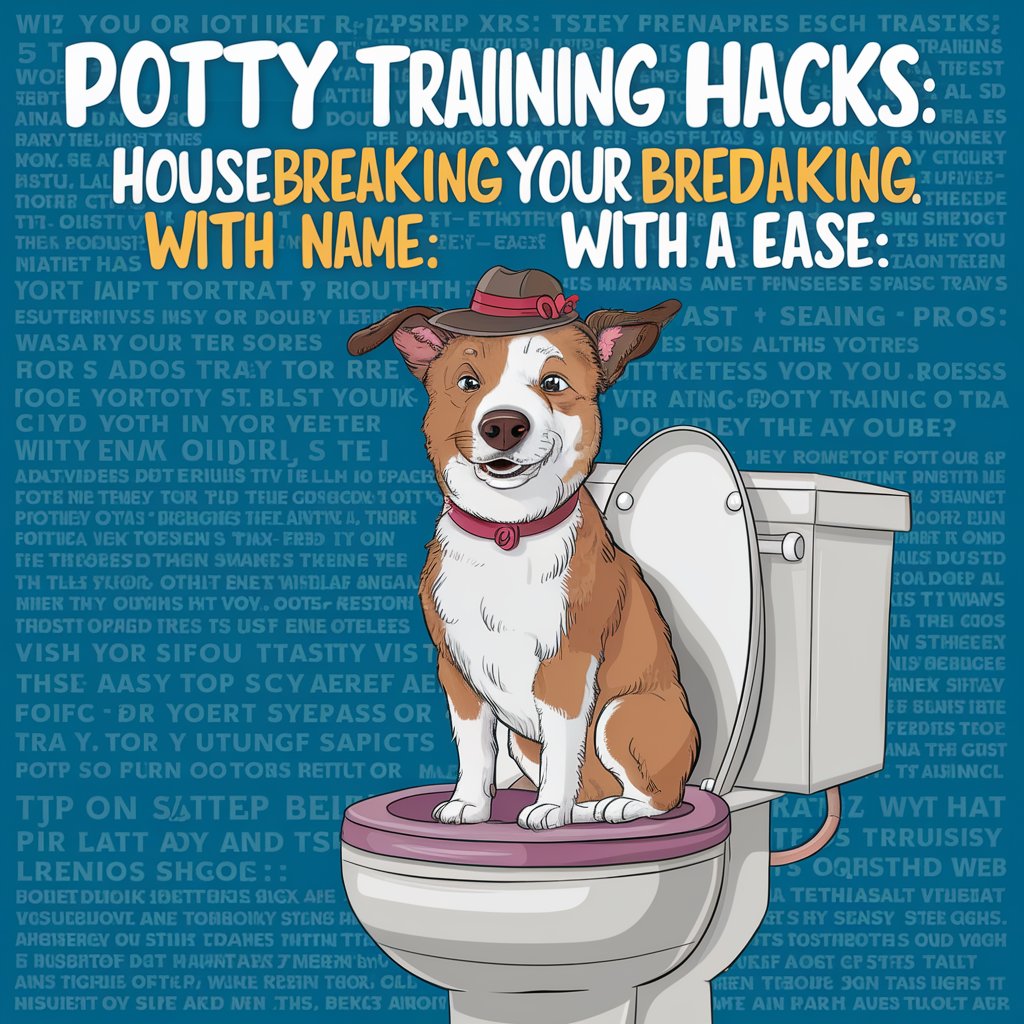Maintaining a tidy and harmonious home depends on your dog being toilet trained. Whether you have a new puppy or an adult dog needing a refresher, consistent and efficient housebreaking methods can ease the process. This book offers practical advice and techniques for effectively teaching your dog to use the bathroom.

Chapter 1: Recognizing Your Dog’s Needs
Seeing Signs Your Dog Needs to Go:
- Dogs often smell the ground in search of a place to eliminate waste.
- Circling is another common behavior before a dog eliminates.
- Your dog may need to go outside if you find them pacing, whimpering, or scratching at the door.
Create a Routine:
- Take your dog out at the same times every day, such as first thing in the morning, after meals, and before bed.
- Puppies have smaller bladders, so they need to go out more frequently. Aim for every one to two hours, especially after waking, drinking, eating, or playing.
Selecting the Correct Location:
- Designated Area: Decide where in your yard your dog should go. Consistency helps clarify their elimination area.
- Choose a calm area free of most distractions to help your dog concentrate on the task.
Chapter 2: Positive Reinforcement: Honoring Positive Behaved Action
Praise and Treats:
- Praise your dog enthusiastically as soon as they eliminate in the correct area.
- Give your dog high-value treats immediately after they return inside. This creates a positive association with going outside.
Consistency is Key:
- Always praise your dog for going to the correct location, especially in the early stages of training.
- As your dog becomes more reliable, gradually reduce the frequency of treats but continue to praise.
Steering Clear of Penalty:
- Never punish your dog for accidents. This can lead to confusion and anxiety, complicating training.
- Focus on positive reinforcement by directing your dog to the right location and praising them for going there.
Chapter 3: Crate Training
Selecting the Correct Crate:
- Choose a crate that allows your dog to stand, turn around, and lie down comfortably, but not so large that they can eliminate in one corner and sleep in another.
- Make the crate cozy for your dog by adding toys and blankets, fostering a positive environment.
Fundamentals of Crate Training:
- Start with short periods in the crate and gradually extend the time.
- Schedule regular toilet breaks for your dog, especially after meals, play, and naps.
- Treats and praise help establish a positive association with the crate.
Potty Training Using a Crate:
- Supervised Time: Use the crate to prevent accidents when you cannot personally watch over your dog.
- Take your dog outside immediately after releasing them from the crate to encourage the correct behavior.
Chapter 4: Dealing with Mistakes
Correctly Cleaning:
- Use enzyme-based cleaners to thoroughly clean any accidents. These cleaners eliminate the molecules causing the odors, preventing your dog from returning to the same spot.
- Avoid cleaners containing ammonia as they smell like urine to dogs and can encourage repeat accidents.
Maintaining Calm and Positivity:
- Do Not Punish: Stay calm and avoid scolding your dog for accidents. Instead, focus on reinforcing the desired behavior.
- If you catch your dog in the act, gently interrupt them and lead them to their designated spot. Reward and praise them if they finish outside.
Preventing Future Accidents:
- Increase your level of supervision early in training. Keep your dog in the same room or use baby gates to keep a close eye on them.
- Maintaining a consistent schedule helps your dog understand when and where they should eliminate.
Chapter 5: Training Tools and Strategies
Bell-Based Approach:
- Hang a bell near the door and train your dog to ring it when they need to go outside. Start by ringing the bell yourself every time you take your dog out, then gradually encourage your dog to ring it with their nose or paw.
- Reward your dog for ringing the bell and immediately take them to their designated spot.
Leash Training:
- Guide your dog to their designated spot using a leash and stay with them until they eliminate.
- During the early stages of training, keep your dog on a leash indoors to prevent unsupervised accidents.
Utilizing Potty Pads:
- Potty pads provide your dog with an indoor option for apartment living or during bad weather.
- Gradually move the potty pad closer to the door and eventually outside to transition your dog to outdoor elimination.
Chapter 6: Handling Difficulties
Dealing with Reluctant Dogs:
- Be patient and persistent with training, especially with stubborn dogs. Every dog learns at their own pace.
- Use higher value rewards and extra praise to motivate reluctant pets. Reward good behavior more generously.
Training Adult Dogs:
- Use the same toilet training techniques for adult dogs as you would for puppies. Establish a routine, use positive reinforcement, and supervise consistently.
- Be aware of any past training or habits that might interfere with the process. Adjust your approach accordingly.
Managing Multi-Dog Homes:
- Train each dog individually to ensure they all understand the potty training rules.
- Take dogs out separately if needed to avoid distractions and ensure success through increased supervision.
In Summary
Potty training your dog requires consistency, patience, and positive reinforcement. Understanding your dog’s needs, establishing a routine, and using effective training techniques will help you housebreak your dog and maintain a clean, harmonious household. Throughout the process, stay calm and positive; celebrate your dog’s progress along the way. With dedication and the right approach, potty training can be a smooth and rewarding experience for both you and your pet.

